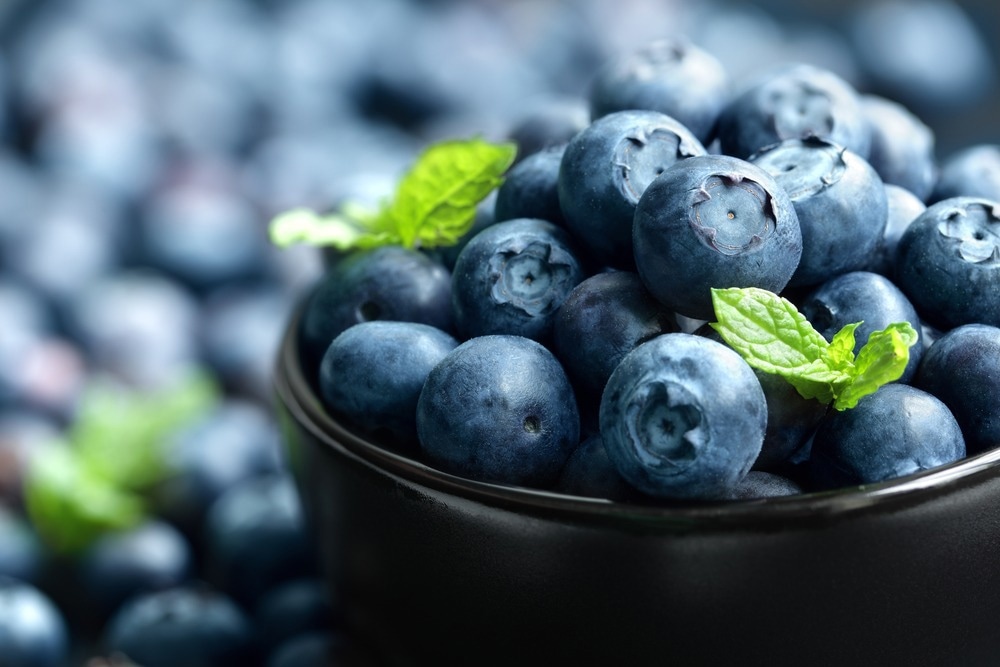The blue color of blueberries is due to tiny external structures in their wax coating, according to University of Bristol researchers.

Image Credit: Brian A Jackson/Shutterstock.com
This holds true for many fruits with the same color, such as juniper berries, damsons, and sloes.
Researchers explain why blueberries are blue despite the dark red color of the fruit’s skin pigments in their study, which was published today in Science Advances.
Rather, the fruit's blue color comes from a coating of wax around it, which is composed of tiny structures that disperse UV and blue light. This is what gives blueberries their blue color to humans and their blue-UV color to birds. The epicuticular wax's randomly arranged crystal structures interact with light to produce the chromatic blue-UV reflectance.
The blue of blueberries can’t be ‘extracted’ by squishing – because it isn’t located in the pigmented juice that can be squeezed from the fruit. That was why we knew that there must be something strange about the color. So we removed the wax and re-crystallized it on card and in doing so we were able to create a brand new blue-UV coating.”
Rox Middleton, Research Fellow, School of Biological Sciences, University of Bristol
The incredibly thin colorant, which is only two microns thick and distinctly blue while reflecting UV light well, may open the door for novel colorant techniques.
Rox adds, “It shows that nature has evolved to use a really neat trick, an ultrathin layer for an important colorant.”
A thin layer of wax covers most plants, and this wax serves a variety of purposes, many of which are still unknown to science. They are aware of its potential for great efficacy as a hydrophobic, self-cleaning coating. However, the significance of the structure for discernible coloration was unknown to researchers until recently.
The group now intends to investigate simpler methods for duplicating and applying the coating. This may result in UV and blue-reflective paint that is more biocompatible, sustainable, and even edible.
Moreover, these coatings may serve many of the same purposes as naturally occurring biological ones that shield plants.
It was really interesting to find that there was an unknown coloration mechanism right under our noses, on popular fruits that we grow and eat all the time. It was even more exciting to be able to reproduce that color by harvesting the wax to make a new blue coating that no-one’s seen before. Building all that functionality of this natural wax into artificially engineered materials is the dream!”
Rox Middleton, Research Fellow, School of Biological Sciences, University of Bristol
Source:
Journal reference:
Middleton, R., et.al (2024) Self-assembled, Disordered Structural Color from Fruit Wax Bloom. Science Advances. doi.org/10.1126/sciadv.adk4219.